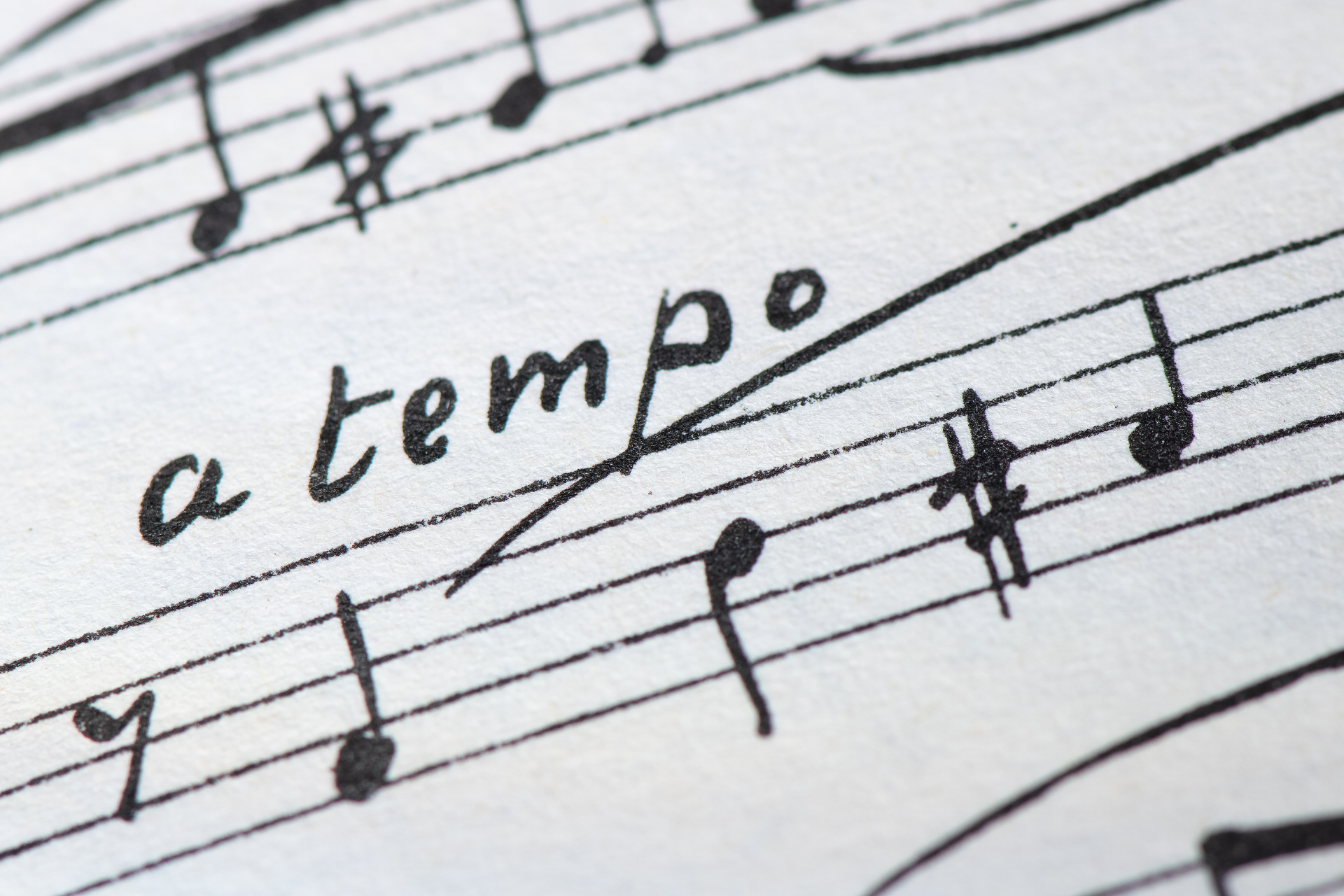General Articles
Understanding Tempo in Playing Musical Instruments
What is Tempo in Music
Tempo is the speed at which a piece of music is played, typically measured in beats per minute (BPM). It sets the pace for a performance and provides structure for both musicians and listeners. Whether you are playing the piano, guitar, violin, or drums, tempo acts as the heartbeat of the music, guiding rhythm, timing, and overall feel. Without tempo, music would lack consistency and lose its ability to evoke emotion. For beginners and advanced musicians alike, mastering tempo is a critical skill.
Historical Development of Tempo
The concept of tempo has existed for centuries, with early composers using descriptive words like “adagio” for slow and “allegro” for fast to indicate speed. Over time, the invention of the metronome allowed musicians to measure tempo precisely in BPM. This revolutionized the way music was written, practiced, and performed. Classical composers like Beethoven and Mozart used tempo markings to convey the mood of their pieces, while modern genres such as jazz, rock, and electronic music rely heavily on precise tempo control to maintain rhythm and groove.
Why Tempo Matters in Music Performance
Tempo is essential because it dictates the flow of a piece. Playing too fast or too slow can completely change how the music feels. For instance, a ballad performed at an excessively fast tempo may lose its emotional depth, while a lively dance piece played too slowly may feel dull and lifeless. Tempo also ensures synchronization when multiple musicians are performing together. An ensemble that cannot stay in tempo will sound disjointed, no matter how skilled the individual players are.
The Relationship Between Tempo and Emotion
Different tempos evoke different emotions in listeners. A slow tempo often conveys calmness, sadness, or reflection, while a fast tempo creates excitement, joy, or tension. For example, a slow piano sonata may bring feelings of intimacy and melancholy, while an upbeat jazz track can energize a crowd. Musicians use tempo as an expressive tool, adjusting it slightly to match the mood of a performance. Understanding how tempo influences emotion allows musicians to connect more deeply with their audience.
Common Tempo Markings
Traditional Western music includes a wide range of tempo markings that indicate approximate speed. Some of the most common include:
-
Largo: Very slow and broad, around 40–60 BPM
-
Adagio: Slow and expressive, around 66–76 BPM
-
Andante: Walking pace, around 76–108 BPM
-
Moderato: Moderate speed, around 108–120 BPM
-
Allegro: Fast and lively, around 120–168 BPM
-
Presto: Very fast, around 168–200 BPM or more
These markings give musicians guidance but still allow room for interpretation depending on the style and context of the piece.
Tools for Practicing Tempo
One of the most important tools for mastering tempo is the metronome. A metronome produces a steady click or beep at a chosen BPM, helping musicians practice playing in time. Digital metronomes and apps now offer customizable options, such as accenting certain beats, changing time signatures, or gradually increasing tempo for speed training. Drum machines and backing tracks are also useful tools for practicing tempo, particularly for modern genres that require groove consistency. For beginners, using these tools builds strong rhythmic discipline.
Tempo and Different Musical Instruments
Tempo influences how instruments are played in unique ways. For string instruments like the violin or cello, tempo affects bowing technique and phrasing. For pianists, faster tempos demand agility and precision, while slower tempos emphasize dynamics and expression. Guitarists often practice with scales and riffs at various tempos to build speed and accuracy. Percussionists, on the other hand, serve as the foundation of tempo, providing the steady beat that guides other instruments. Understanding how tempo applies to each instrument helps musicians become more versatile.
Tempo in Ensemble and Band Settings
In group performances, maintaining a consistent tempo is crucial for cohesion. Bands often rely on drummers or conductors to establish the tempo, but every musician must listen and adjust accordingly. Playing in an ensemble teaches valuable skills such as internalizing rhythm and responding to subtle tempo changes. Some genres, like jazz, allow for flexible tempos with rubato sections, while others, such as electronic dance music, depend on strict tempo adherence for synchronization with digital beats. Effective communication and practice are key to mastering tempo in group settings.
Techniques for Improving Tempo Control
Developing solid tempo control requires consistent practice and patience. Musicians can use several techniques to strengthen this skill:
-
Subdivision Practice: Breaking down beats into smaller divisions, such as eighth notes or sixteenth notes, to improve timing accuracy.
-
Gradual Speed Increases: Starting a piece slowly with a metronome and gradually increasing the tempo to build speed without sacrificing accuracy.
-
Silent Practice: Playing along with a metronome and then turning it off mid-performance to test whether you can maintain tempo independently.
-
Recording and Playback: Recording practice sessions to identify where tempo drifts and correcting them in future practice.
These techniques train both the mind and body to internalize tempo, making it second nature.
The Role of Tempo in Modern Music Genres
Tempo is particularly important in modern genres where rhythm defines the style. In hip-hop and rap, tempo sets the groove for beats and lyrical flow. Electronic dance music often uses strict tempos between 120 and 140 BPM to keep audiences moving on the dance floor. Rock and metal bands rely on rapid tempos for energy and intensity, while pop music frequently adjusts tempos to match commercial appeal. Understanding the role of tempo in various genres helps musicians adapt their playing to different musical environments.
The Connection Between Tempo and Human Physiology
Interestingly, tempo often aligns with natural human rhythms. For example, tempos in the range of 60–100 BPM mirror the average human heartbeat, making them feel instinctively comfortable to listeners. Faster tempos can raise energy levels, while slower ones can induce relaxation. This physiological connection is why tempo is used in settings like meditation music, workout playlists, and therapeutic environments. Musicians who understand this relationship can intentionally design performances to evoke specific physical and emotional responses.
Challenges in Mastering Tempo
Even experienced musicians face challenges with tempo control. Nerves during live performances can cause players to rush, while fatigue may lead to dragging tempos. Complex rhythms and syncopation also make it difficult to stay aligned with a consistent beat. Overcoming these challenges requires awareness, disciplined practice, and sometimes external support, such as playing with a click track during live shows. Musicians who can master tempo under pressure stand out for their professionalism and reliability.
Tempo Flexibility and Expression
While strict tempo is important, some music benefits from flexibility. Classical pieces often use rubato, where the performer slightly speeds up or slows down for expressive effect. Jazz musicians frequently shift tempo within improvisations to build tension or create contrast. Folk and world music traditions also embrace flexible tempos that reflect cultural styles. Knowing when to maintain strict tempo and when to allow for expressive variation is part of becoming a well-rounded musician.
Final Words
Tempo is more than just speed; it is the foundation of rhythm, emotion, and cohesion in music. From historical tempo markings to modern metronome apps, musicians rely on tempo to guide their performances. It influences how instruments are played, how ensembles work together, and how audiences respond emotionally and physically. Mastering tempo takes time and dedication, but it is a skill that elevates any musician’s artistry.
Looking to refine your musical journey with the right instruments and accessories? Visit Rhythm Music Shop, proudly serving Markham, Richmond Hill, North York, Scarborough, and the rest of the GTA.

